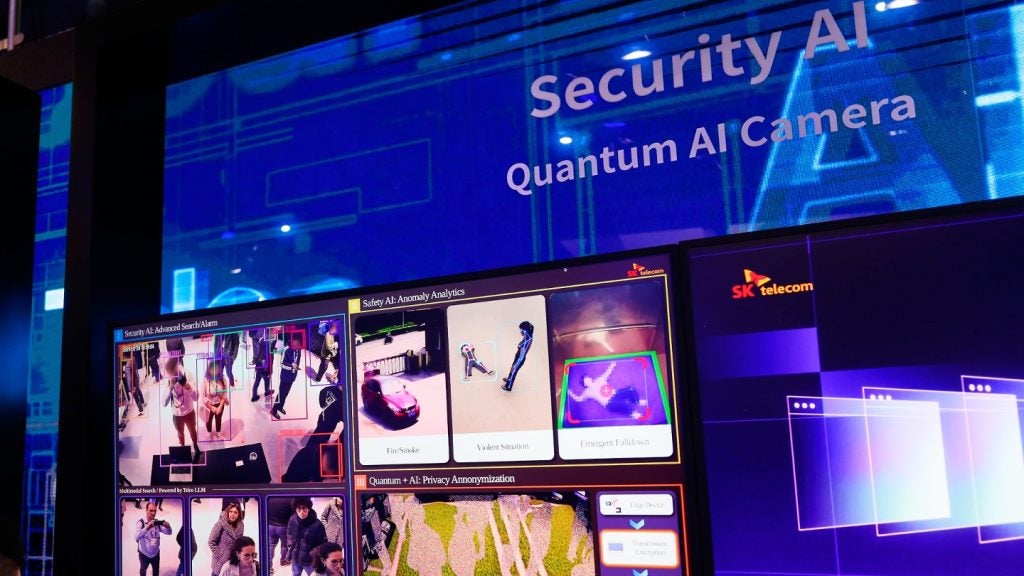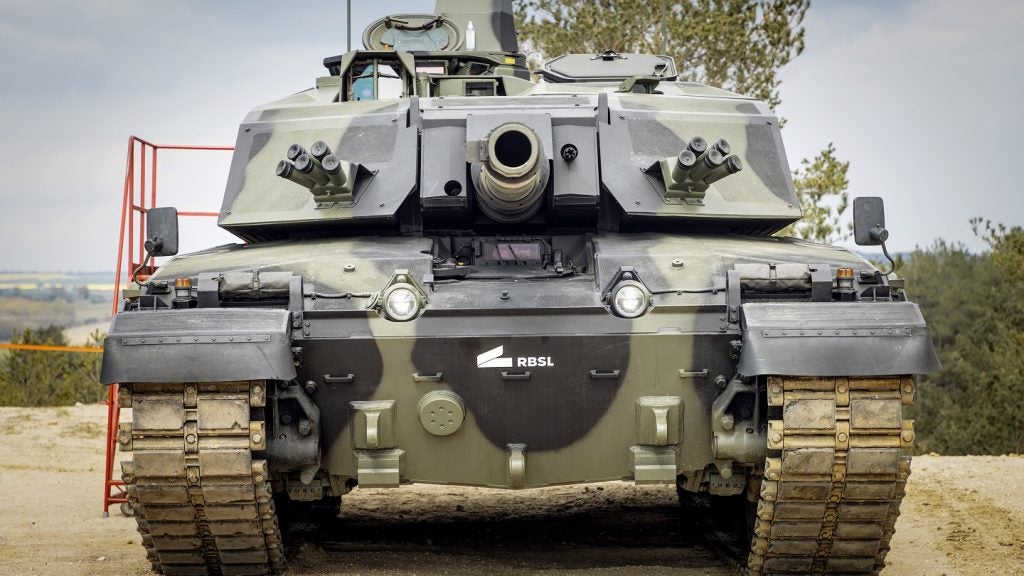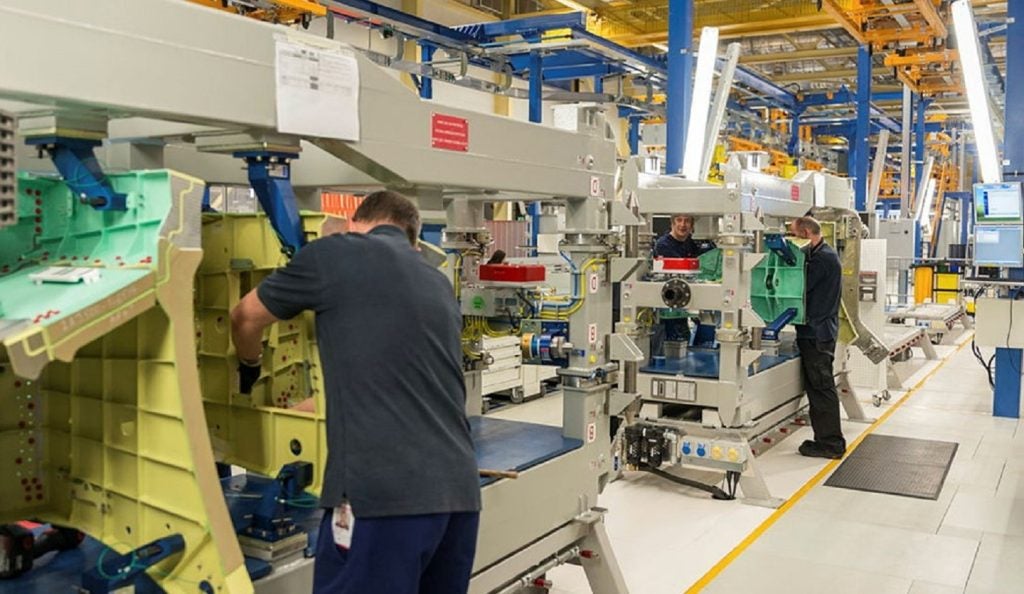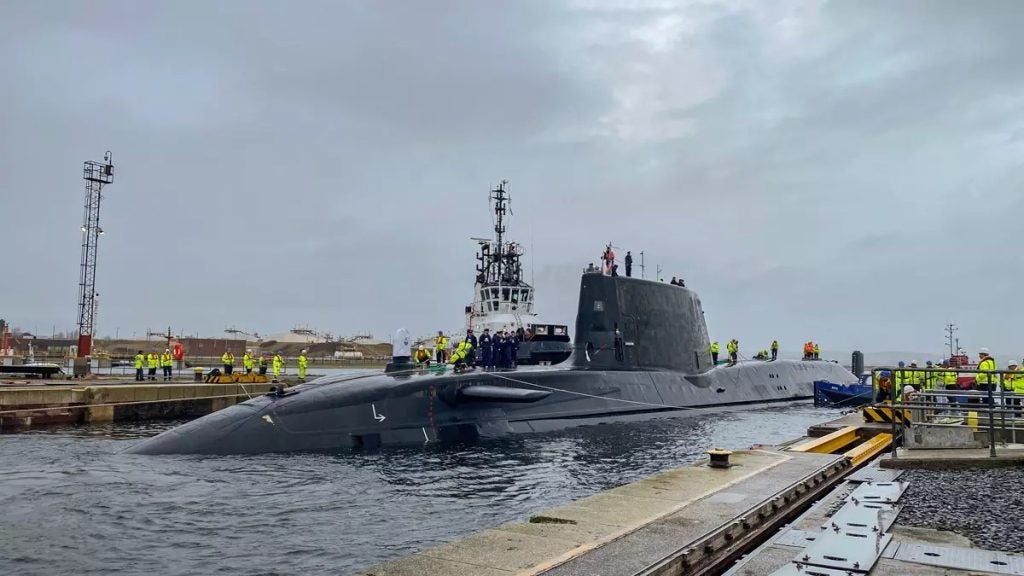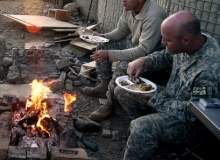

When US troops deployed on Operation Desert Storm in 1991 they were equipped with a revolutionary new bit of kit. But it wasn’t a type of weapon or body armour, it was a brand-new military ration pack called the MRE – an acronym for Meal, Ready to Eat. It was specifically designed to transform eating in a warzone by doing away with bulky, WWII-era canned foods and replaced them with futuristic little brown pouches.
The pouches could be stored for up to three years at 80 degrees Fahrenheit and survive being dropped from an aircraft, making them perfect for military operations.
Twenty years on the MRE ration packs are still going strong. The packs have been used extensively over the last decade in Iraq and Afghanistan and, importantly, ensured soldiers have been well fed even in the most austere locations. And that’s important for a soldier’s physical, as well as cognitive, performance; if a soldier doesn’t eat right then his performance will deteriorate fairly rapidly.
Good food – as important as a weapons system
There’s a reason for Napoleon’s famous saying "An army marches on its stomach".
See Also:
"Operational field feeding is extremely important to maintaining warfighter capability, lethality and effectiveness on the battlefield," explains Jeremy Whitsitt, a team leader at the Pentagon’s Combat Feeding Directorate. "It is just as important as a weapon system."
How well do you really know your competitors?
Access the most comprehensive Company Profiles on the market, powered by GlobalData. Save hours of research. Gain competitive edge.

Thank you!
Your download email will arrive shortly
Not ready to buy yet? Download a free sample
We are confident about the unique quality of our Company Profiles. However, we want you to make the most beneficial decision for your business, so we offer a free sample that you can download by submitting the below form
By GlobalDataThe Combat Feeding Directorate is part of the US Army Natick Soldier Research, Development, and Engineering Center (NSRDEC), which specialises in revolutionary soldier systems technology. The food scientists at Natick – based in Massachusetts – also work closely with NASA on several projects including their Mission to Mars programme.
US military researchers are close to developing a pizza which remains edible for three years and never requires refrigerating or freezing.
Since the first MREs were introduced in the 1980s, NSRDEC research teams have been finding novel ways to improve the packs. Billions of dollars have been spent ensuring the ration packs are some of the best in the world. Those efforts have culminated in several technological breakthroughs which will soon allow products such as pizzas, seafood and even ‘fresh-like’ vegetables to be included in ration packs.
The long-lasting pizza is the crown jewel for Natick. The MRE pizza whipped up a media frenzy earlier this year and automatically got people asking: "What does three year old pizza taste like?" Well, if the people at Natick are to be believed, pretty good actually.
"It tastes very good, honestly," insists Whitsitt. "A lot of comments we get are that it tastes like if I had pizza the night before and then I ate it at breakfast. It tastes like that cold pizza the next day! Who doesn’t love cold pizza?"
The pizza is still in its development phase and has not yet been fielded in any MREs. Natick says they are now at the ‘down-selecting’ stage where one or two of the best varieties – around twelve to 15 varieties of the pizza were developed in the lab – will be chosen to be field-tested with troops later on this year.
One of the biggest hurdles for the team has been to make sure the pizzas can be produced on an industrial scale. In March, Natick conducted producibility tests, which ensure an MRE pizza can be manufactured cost-effectively with a contracted company. The results from those tests were positive, says Whitsitt.

Four fingers of death – the origins of the MRE
Having tasty pizzas in your ration packs is a far cry from the origins of the MRE.
After the First Gulf War ended, feedback from soldiers suggested there were a lot of improvements required for MREs. Some were so bad that soldiers came up with their own dark-humoured nicknames including ‘Meals, Rarely Edible’, ‘Meals Rejected by the Enemy’, and possibly most disturbing: ‘Massive Rectal Expulsion’.
"Going back to the very first generation of MREs, back in the early 80s, it was the hotdogs," Whitsitt remembers. "Soldiers would call them the ‘four fingers of death’, because they were four little hotdogs that came in a pouch."
When the Gulf War finished, then-Chairman of the Joint Chiefs of Staff Colin Powell personally intervened to make sure soldiers were getting top-quality ration packs on operations. The Combat Feeding Directorate was mandated to start a continuous product improvement programme which evaluated the ration packs in service and whether they could be improved or replaced.
"Up until [Colin Powell’s intervention] it was a father-knows-best mentality," says Whitsitt. "It was ‘Hey, we’ll just put food into a pouch, make it last for three years, make it safe and the soldier will eat it’. There was no real customer focus; nobody looked at what exactly the soldiers wanted."
Soldiers deploying on Desert Storm could initially choose from a selection of twelve different meals in their MREs. With a new focus on ‘customer’ requirements the range increased to 16, then 20, and by the end of the 1990s there were 24 types of meals to choose from. This increase in meals was followed up with a diversification of cuisines to include Italian, Asian and Spanish dishes to suit different palates.
Each meal contains around 1,300 calories and every MRE has to provide 3,600 calories per regulations set out by the Office of the Surgeon General. That’s nearly double the recommended intake for a civilian in everyday life, as soldiers are constantly on the move, carrying heavy kit and expending a huge amount of energy. Afghanistan’s relentless tempo even inspired the development of a calorific supplement which would give an extra 1,000 calories on top of the regular MRE.
Tabasco – a sauce of comfort
Over the years since, the Ministry of Defence has been responsible for setting up a number of training villages.
It’s not just about upping the calorie intake; ration pack developers want to include some home comforts for soldiers as well. One aim for developers is to provide as many commercially available products as possible, which can include items such as M&Ms, Skittles and the ever-popular Tabasco hot sauce, which has migrated to British ration packs in recent years. Surprisingly, these products are not specially manufactured for the US Army; they are regular off-the-shelf items repackaged to meet Pentagon requirements.
Every year, the Combat Feeding Directorate runs annual field tests where soldiers, sailors and airmen can taste both current and new ration packs and rate them on a scale of one to nine based on factors such as flavour, texture and odour. That data is then processed and recommendations are made to the Joint Service Operational Ration Forum which meets every year. If a certain MRE scores particularly badly, it will be phased out.
Natick has also come up with novel ways to improve packaging and make a standard ration pack more useful for the soldier. To address problems of dangerous bacterial growth in poorly washed canteen cups and hydration packs, Natick introduced a powder sachet which the soldier could pour water in, shake up, and drink out of. What seems quite a pedestrian improvement, says Whitsitt, means one less item the soldier has to carry.
Another revolutionary development was the flameless ration heater introduced in the early 90s. It means troops in the field no longer need to carry out the laborious task of starting a fire; instead they can rely on self-heating ration packs. The heater, which resembles a small green bag, requires a small amount of water to be poured in and a chemical reaction will heat the contents to 100 degrees Fahrenheit. Scientists at Natick are now working on a new generation of air-activated flameless heaters.
Advancing food processing methods
Food scientists have also been experimenting with new sterilisation methods to broaden the foodstuffs available in ration packs. The traditional technique for sterilising food for ration ‘retort’ packs involves placing pouches of food inside what resembles a large pressure cooker at a high temperature over a long period to kill off any bacteria. As Whitsitt explains, this process rules out more delicate options such as fish.
Now food scientists are experimenting with a sterilisation method called advanced thermal processing. The process applies microwave-assisted thermal sterilisation (MATS) – similar to a domestic microwave – which offers deeper and faster "thermal penetration" and limited exposure to high heat levels. Importantly for troops it opens up a huge amount of foods that were once considered impossible for the battlefield, including fresh-like vegetables, dairy products and whole-muscle meats such as chicken breast.
It’s these processing methods which have led to the ration pack pizza, an example of how revolutionary technology and research is being used to improve the soldier’s culinary experience on the battlefield. Importantly, a good meal such as pizza or chicken breast can improve morale and make the soldier a much more effective part of a squad. MREs have come a long way since they were first introduced and luckily for soldiers, the four fingers of death are truly history.
Follow Grant Turnbull on Google+


.gif)

